City Council Approves Plan to Close Santa Monica Airport by 2028
City will now be able to plan for the airport’s closure following January 24 meeting
By Dolores QuintanaThe Santa Monica Airport reached its 100th anniversary in 2022 and the City of Santa Monica now has plans in the works to close the airport by 2028. The City Council officially approved the process of closing the airport at a meeting on January 24.
In the City’s press release, Mayor Gleam Davis said, “This is the beginning of a community process to reimagine the Airport site, which accounts for an unprecedented 4.3% of the City’s land. We know this is an asset Santa Monicans care about and we want to work together to set goals and priorities to meet diverse community needs for the next several generations.”
The city of Santa Monica has had continual legal disagreements with the Federal Aviation Administration (FAA) over control of airport operations and the use of the 227 acres of land that the airport currently stands on. The city has used the passage of local regulations since the 1970s to respond to the needs of local residents with the quality of life issues that the airport’s operations have raised. The desire of many residents and the city to close the airport has been part of the community discussion for roughly fifty years.
Several campaigns have been launched to rally support and affect the airport’s closure. The Santa Monica Mirror reported on two of those groups, Citizens Against Santa Monica Airport Traffic (CASMAT) and Sunset Park
Anti-Airport, Inc., (SPAA), and their efforts in 2013. Their stated reasons for closing the airport were that the airport was, “too close to residential neighborhoods; recent airplane crashes; new homeowners in the area immediately surrounding SMO who do not care for the airport; the potential closure of 2,000 feet of the runway; and, a poll where 80 percent of respondents favored airport closure.”
The “consent decree” that was agreed upon in 2017 between the city and the FAA will return the land and its usage to the city of Santa Monica on December 31, 2028, and allow the city to close the airport. In a document from the office of the Santa Monica City Clerk, the agreement was explained and said, “After years of trying to assert local control over Airport activities and use of the Airport property, the City entered into a Settlement Agreement and “Consent Decree” with the United States of America and the Federal Aviation Administration that resolved all outstanding disputes between the parties and relinquished all claims by the U.S. and the FAA as to Airport land.”
The city will now be able to plan for the airport’s closure and intends to “invite community participation in designing what may be the greatest transformative event of this century for the City of Santa Monica, and perhaps the region.”
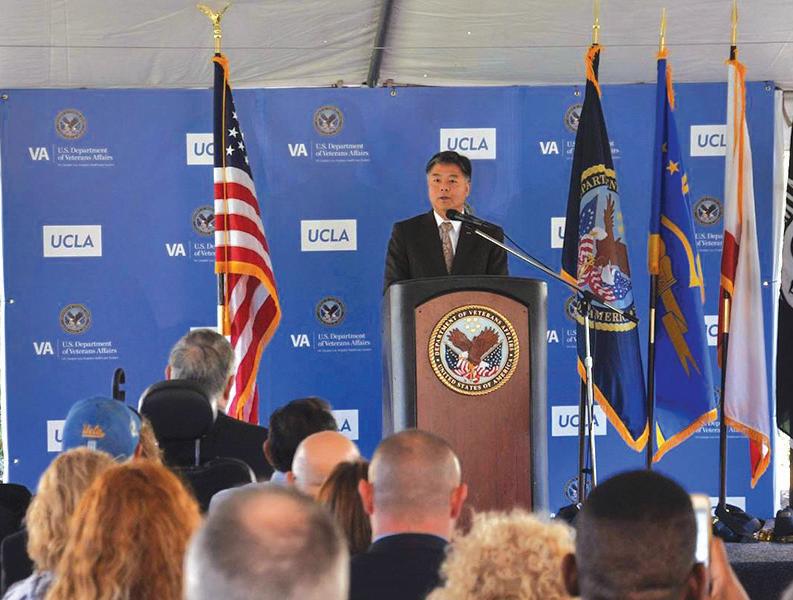
Measure LC which was passed in 2014, does give the City Council oversight over the use of the 227 acres of land that will be freed up by the airport’s closure. The City Council will be able to approve the development of parks, public open spaces, and public recreational facilities, and the maintenance and replacement of existing cultural, arts, and educational use on the land. New real estate development is prohibited on the
Steve Marcy, Beloved Lincoln Middle School Teacher and Scoutmaster, Passes Away at 77
Longtime Lincoln math teacher passes away
Steve Marcy, beloved Lincoln Middle School teacher and Scoutmaster of Santa Monica Boy Scout Troop 2, passed away last week at the age of 77.
Steve’s impact on his students and scouts
was immense. He was first hired in 1971 as a math teacher at Lincoln Middle School in the Santa Monica-Malibu Unified School District (SMMUSD), where he taught until 2006 before retiring in 2007.
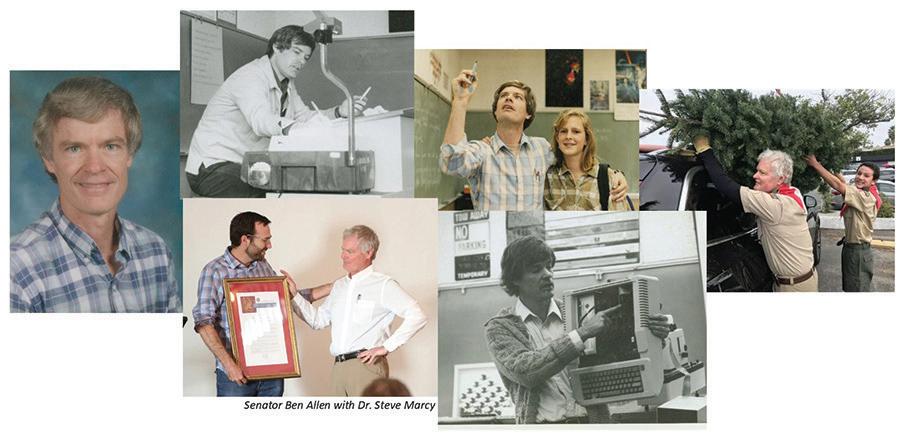
“Steve brought a wonderful sense of fun and adventure into his mathematics
Steve Marcy, see page 7
land approved by the voters, with limits on potential developments.
In the meeting, the City Council “confirmed the values establish a standard for the Airport conversion process, foundational goals of sustainability and resiliency for the future of the Airport, and goals for an inclusive community space centered around the concept of a Great Park and supporting land uses.”
The process that the City Council has confirmed will start with a Request For Qualifications (RFQ) in early 2023 that will search for qualified firms or multidisciplinary teams to help the City develop a public-facing process that will be able to get the community to participate in the planning and add their input. It “will allow staff to evaluate the merits of each firm or team against an established criterion, before requesting detailed proposals. A shortlist of qualified firms or teams will be established through this evaluation and shortlisted candidates will later be invited to submit detailed process and cost proposals for the project.”

The next step is a Request for Proposal (RFP) after the RFQ evaluation. The RFP will include “input from the community so
that residents and other stakeholders have the opportunity to articulate their interests in how the planning process is shaped from inception.” City staff will meet with Santa Monica boards and commissions, neighborhood groups, the Chamber of Commerce, Santa Monica Travel and Tourism, and business-related interests such as merchants’ associations and local business improvement districts. This is intended to provide a “detailed expression of community interest, concerns, and other factors that are important to Santa Monicans.” for the RFP which will then be released to the public in late spring of 2023.
The city’s press release identifies a timeline for the process of the closure of the Santa Monica Airport:
• Consultant Selection: Summer 2023
• Project Initiation: Winter 2023
• Existing Conditions: Spring 2024
• Scenario Planning (Preferred Scenario
Approved): Spring/Summer 2026
• Specific Plan Initiation: Fall/Winter 2026
• Consent Decree Airport Closure Author ization: Winter 2028
• Specific Plan Adoption: Fall 2028-2033 or beyond
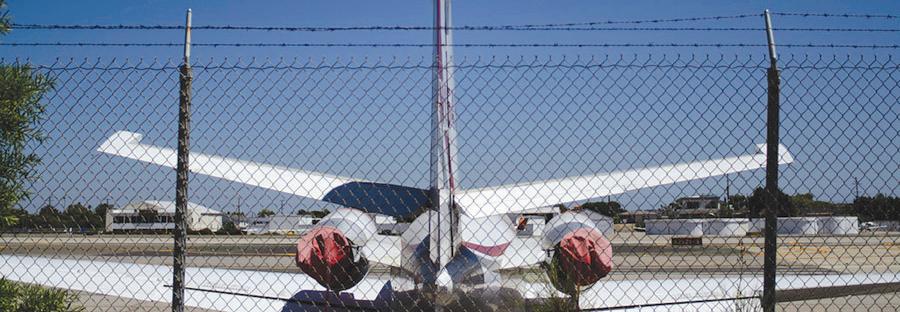
©2022 Bombardier Recreational Products Inc. (BRP). All rights reserved. ®, TM and the BRP logo are trademarks of BRP or its a liates. In the U.S.A., products are distributed by BRP US Inc. O ers valid in the United States only, from October 21, 2022 – January 4, 2023. The terms and conditions may vary depending on your state and these o ers are subject to termination or change at any time without notice. While quantities last. †Rates as low as 0.00% APR (Annual Percentage Rate) for 60 months on all new or unused model year 2022 – 2020 Can-Am Youth ATV DS70 and DS90. Examples of monthly payments required over a 60-month term at a 0.00% APR rate: $0.00 per $1,000 nanced. An example of a monthly payment with $0 down, no rebate, an APR of 0.00% APR for 60 months at an MSRP of $2,349 is $39.15/mo. Total cost of borrowing $0.00 with a total repayment obligation of $2,349. Down payment may be required. Other nancing o ers may be available. Minimum and Maximum Amount Financed may vary. Not all buyers will qualify. Higher rates apply for buyers with lower credit ratings. Other quali cations and restrictions may apply, depending on the participating nancial




































Phil Brock Appointed to Serve on National League of Cities’ Public Safety and Crime Prevention Committee
Rep. Lieu Secures $2.5 Million for Local Projects in Santa Monica
youth and empowers them to reach their full potential. I am grateful to both of these organizations for the heroic work they do to make our community a better place.”
Brock will

help
shape NLC’s policy positions and advocate for America’s cities, towns and villages before Congress
Santa Monica City Councilmember Phil Brock has been appointed to the National League of Cities’ 2023 Public Safety and Crime Prevention federal advocacy committee.

President Mayor Victoria Woodards of Tacoma, Washington announced the one-year term, which provides councilmember Brock with strategic direction and guidance to advocate for NLC’s public safety policy priorities, including law enforcement, fire prevention, natural disaster preparedness and homeland security. This follows his earlier appointment to Cal Cities’ Public Safety Policy Committee for 2023.
“Public Safety and all that it encompasses is the number one responsibility of every public official in our country. Santa Monica’s residents demand that councilmembers focus on public safety. I’m honored to serve our community on a national scale,” Brock said.
Councilmember Brock will help shape NLC’s policy positions and advocate for America’s
cities, towns and villages before Congress, the administration and within their own localities as a member of NLC’s PSCP committee.
“NLC’s federal advocacy committees are a key tool for gathering insights directly from the communities that our members serve,” said NLC President Mayor Victoria Woodards of Tacoma, Washington. “I am excited to have Councilmember Brock serve on the NLC PSCP committee to ensure every city, town and village in this nation has the resources they need to thrive.”
The leadership of this year’s committee will consist of Chair Ras J. Baraka, Mayor, City of Newark, NJ; Vice Chair Rhonda Jerome, Council Member, City of North Charleston, SC; and Vice Chair Brian Kazy, Council Member, City of Cleveland, OH.
Funding will go towards Santa Monica Behavioral Health Center and Ready to Succeed Scholarship program
 By Sam Catanzaro
By Sam Catanzaro
Congressman Ted W. Lieu (D-Los Angeles County) has secured $2.5 million in federal funding for two community projects in Santa Monica for the Fiscal Year 2023 appropriations bill, recently signed into law by President Biden.
The first project is the Santa Monica Behavioral Health Center, which will receive $1.5 million to provide around-theclock behavioral health care to vulnerable populations such as those experiencing homelessness. The second project is the Ready to Succeed Scholarship program, which will receive $1 million to increase enrollment and help foster youth and first-generation college students reach their full potential.
“The two Santa Monica community projects for which I secured funding support vulnerable people in our community,” Lieu said. “The Santa Monica Behavioral Health Center provides passionate, safe care for those experiencing homelessness, and the Ready to Succeed program lifts up underprivileged
The $1,500,000 allocated for the Santa Monica Behavioral Health Center will be used to convert an existing City-owned facility into a 24/7 intake center for first responders and local emergency rooms. This 24/7 center will focus on providing behavioral health care for people experiencing homelessness across various vulnerable populations in Santa Monica.
The additional $1 million grant awarded towards the Ready to Succeed Scholarship program aims at further increasing enrollment and creating even more opportunities for foster youth and first-generation college students looking to complete college and lead meaningful lives after graduation. According to statistics available on Rep. Lieu’s website, current participants have achieved remarkable success such as 90% graduating college within 4.5 years of enrolling, 92% securing jobs within 6 months of graduation, and 95% being able to envision a bright future ahead of them with this program’s help.
Last year, Rep. Lieu secured nearly $11 million in federal funding across 10 projects throughout Los Angeles County - including the $2 million allotted towards converting an existing parking lot into affordable housing in Santa Monica.
SMC Receives Grant to Expand Access to Critical Support Services for Foster Youth

New
programs; and direct financial aid to current/ former foster youth.
at SMC
Santa Monica College (SMC) has been awarded a $942,225 grant from California Community Colleges Chancellor’s Office to boost access to essential academic and wraparound services for former and current foster youth. They will launch a new, continuous, extensive NextUp Program under the umbrella of SMC’s EOPS/CARE Program—which helps students facing educational and socioeconomic obstacles—to achieve this.
The Budget Act of 2022-23 increases funding for the NextUp Program (formerly Cooperating Agencies Foster Youth Educational Support Program) by $30 million for California Community Colleges Chancellor’s Office to distribute among community colleges around the state in accordance with a set funding formula. Thanks to this grant, SMC will set up a NextUp Program to provide academic, transfer and financial aid counseling; academic tutoring; mental health support; case management referrals to college/community
“National research shows that while a postsecondary credential can greatly enhance the likelihood of foster youth making more successful transitions and increase their chances for personal fulfillment, the obstacles and barriers they face are immense,” said SMC Superintendent/President Dr. Kathryn E. Jeffery. “This is why the efforts of the college’s Guardian Scholars program over the past several years have been critical in leaving no stone unturned in ensuring our former/current foster youth students have the supportive family they deserve, here at SMC. We are thrilled that this new NextUp Program will help extend this legacy of care to these deserving students!”
The purpose is to raise the number of current and former foster youth enrolling, persisting, and completing their educational goal at the college.

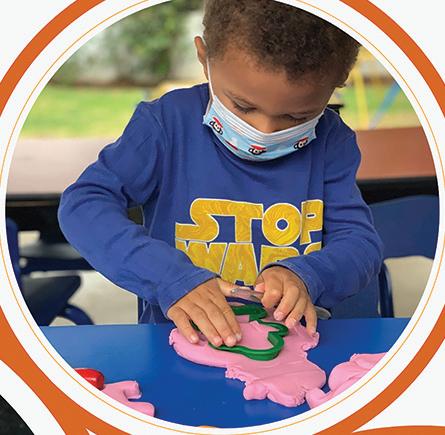




Dr. Debra Joseph Locke, who supervises SMC’s EOPS/CARE and coordinates the Guardian Scholars program for current and former foster youth, said that the new NextUp program would be “a huge boost” to the college’s foster youth student population.
“To not have to worry about textbooks, food, transportation, housing etc., frees a student to fully focus on classes and the future,” Locke
said. “This is a resilient student body that truly deserves the additional support, increased programming and direct aid that will now be available to help them to grow, flourish and succeed at SMC and beyond.
SMC will keep its Guardian Scholars program running to support foster youth students who don’t qualify for NextUp. NextUp will be combined with Guardian Scholars and other student support services on campus to make sure all students get equitable services and a sense of belonging. Guardian Scholars offer academic, career and transfer counseling; priority enrollment; meal and transport assistance; mental health therapy; student success workshops, and more.
Established in Fall 2013, SMC’s Guardian Scholars program was created through a threeyear grant from the Angell Foundation and
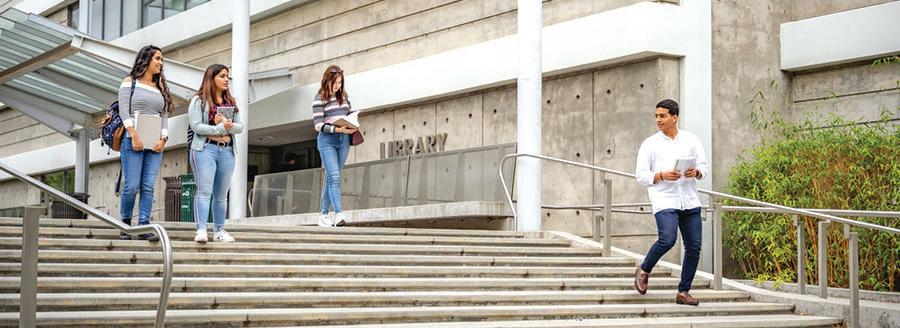
further supported by grants from the S. Mark Taper Foundation, The Whittier Trust, Stuart Foundation, Attias Family Foundation, Sidney Stern Memorial Trust, California Community Foundation, The Mark Hughes Foundation and Providence/St. John’s Health Center. Since 2015, 58 Guardian Scholars have graduated from Santa Monica College or transferred to universities such as UCLA, USC, UC Irvine, San Diego State, Cal State Long Beach, UC Berkeley and FIDM among others. To date the program has served around 720 former or current foster youth.
For more information about NextUp statewide, visit nextup.cccco.edu. For more information on SMC’s Guardian Scholars, and the new NextUp program, email Locke_ Debra@smc.edu.
NextUp program will provide academic & comprehensive support, plus direct financial aid to foster youth enrolled
To A Better Housing Element
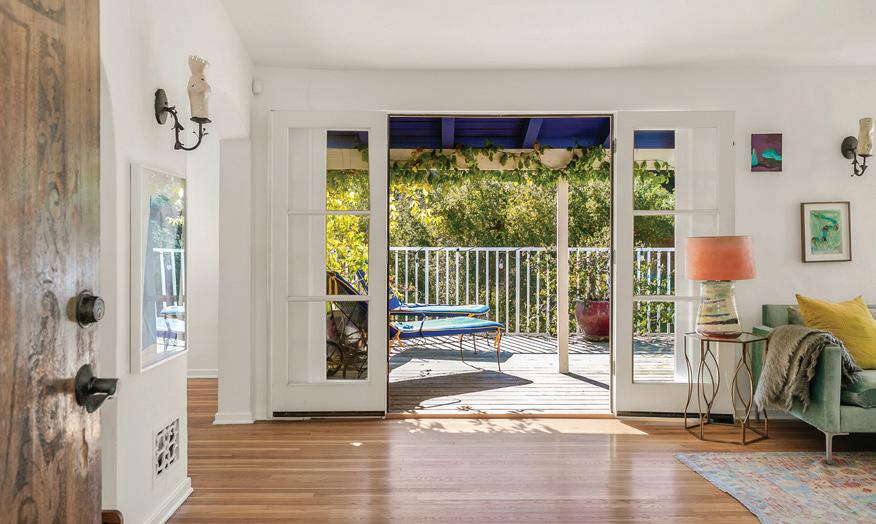
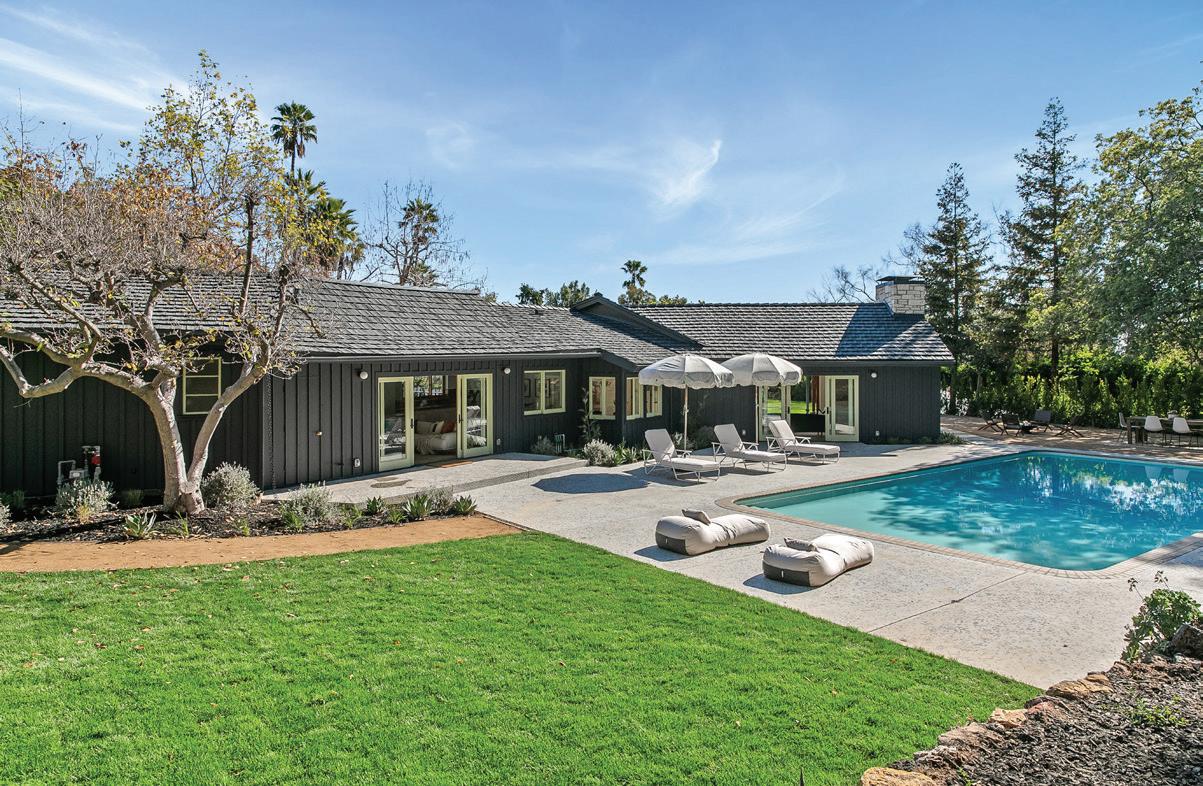
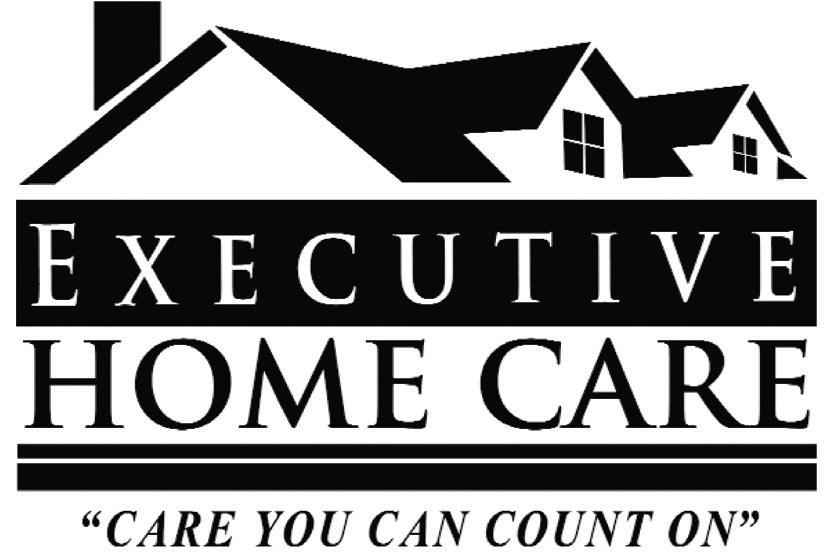
Preserving the Neighborhood Commercial (NC) zoning
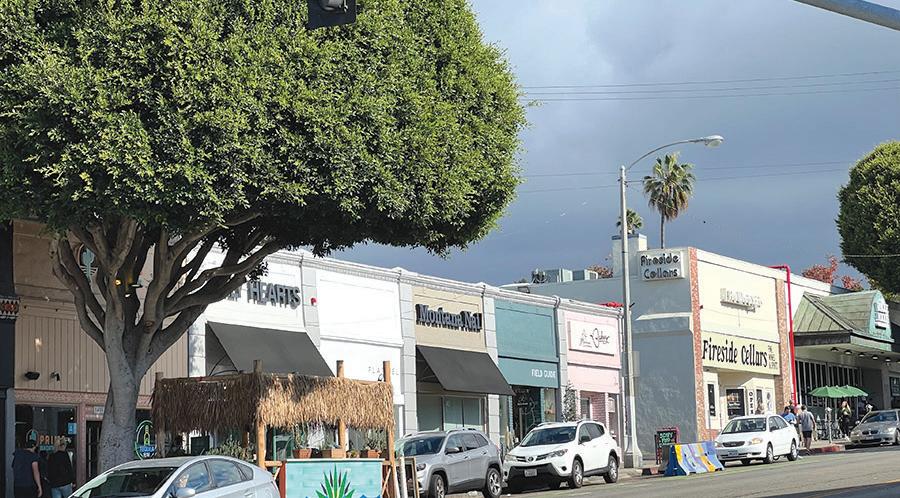
Your City is busy rewriting much of its zoning code to implement our new Housing Element as demanded by the State of California. That laborious rewrite has been going on for months because every line in our zoning code has to be squared both with the decisions made in the Housing Element and with the dozens of new interactive state laws dictating exactly how the City must operate. That Housing Element, which mandated an addition of about 9000 new housing units in the next eight years (about a 20% population increase), involved a massive up-zoning of all the boulevards and some avenues, the Downtown and the Bergamot area in addition to allowing up to 6 units on existing singlefamily lots among other changes. This is a transformative change to our City’s character and quality of life.
In the rush to get the Housing Element approved by the State, the City did not have time to study all the implications and adjust for secondary effects of such a transformation. Some obvious conflicts were noted for example, the traffic increases, or the inability to meet our water neutrality goals or the conflict with the State’s 2045 carbon neutrality goals, or the mystery of where all the wealthy renters and buyers of all this new housing would come from when the State lost more than half a million people between April 2020 and July 1, 2022 (the interval when the Housing Element was being prepared)? But with the fine-grain rewrite of the Zoning Code, we can see places where the Housing Element can be improved to mitigate those conflicts without altering its essential character.
One area where we can improve the Zoning Code is to avoid up-zoning all the commercial districts uniformly, but by preserving some as is because of the unique role they play in our City. Specifically, preserving the NC Zone which is a low rise Neighborhood Commercial zone with a current base height of 32’ but is now set by the new Housing Element to balloon up to 50’-65’ in base height for housing projects (State required bonuses would also allow up to an additional 33’ in height for 100% affordable housing projects!). This NC Zone is found primarily scattered on Pico Blvd. (Euclid to Centinela), on Montana Ave (7th to 17th), on Ocean Park Blvd. (16th to 18th and 25th to Centinela) and on Main Street (Bay to Pier Ave.). The neighborhood serving NC Zones encourage walk in and bike ride in customers from the adjacent neighborhoods.
Jane Jacobs, a famous American urbanist, in her book The Death and Life of Great American Cities, accurately describes the role of these neighborhood serving businesses in existing buildings:
“But the unformalized feeders of the arts--studios, galleries, stores for musical instruments and art supplies, backrooms where the low earning power of a seat and a table can absorb uneconomic discussions--these go into old buildings. Perhaps more significant, hundreds of ordinary enterprises, necessary to the safety and public life of streets and neighborhoods, and appreciated for their convenience and personal quality, can make out successfully in old buildings, but are inexorably slain by the high overhead of new construction.”
Not the time to destroy local serving
businesses
The last nine words are critical: “are inexorably slain by the high overhead of new construction.” In other words, the new Zoning Code’s incentivizing demolition and construction of new housing projects in the place of these existing neighborhood serving businesses means they will disappear, and their ground floor spaces will inevitably be filled by very high-priced new businesses to the detriment of the adjacent neighborhoods (if they are replaced at all since the new Zoning Code does not even require ground floor commercial uses on Pico or Ocean Park). The old businesses will be gone never
to return because they cannot match the new doubled and tripled rents charged by the new construction. This up-pricing is expected on the major boulevards (Wilshire etc.) and the Third Street Promenade which are regional draws for major corporate chains but are unnecessary and often unprofitable in the smaller neighborhood serving areas such as the NC zoning. These new higher priced businesses will for the most part cater to new wealthy residents, but not long-time Santa Monicans who we are directed not to displace.
Furthermore, with the approach of what
SMa.r.t, see page 7
SMa.r.t, from page 6
seems to be a recession (caused by interest rate spikes), and the global disarray of retail businesses (caused by online shopping), and the known difficulty of hiring to keep restaurants alive; now is not the time to wipe out any existing businesses. We already lose too many beloved legacy businesses to “natural” turnover, e.g. the Pioneer Boulangerie, the 18th Street Cafe, Busy Bee Hardware, Evett’s Model Shop, just to name a few. I’m sure you have your own lost favorites. But imagine the bloodbath of local businesses when the new Housing Element places development on steroids.
Finally, these small businesses in lower-rent existing buildings not only give employment to a wide variety of workers, eg high school/ college students, but also form a source of cheaper rental spaces for start-up businesses which are especially valuable for under-served and under-represented minority entrepreneurs.
Affirmatively Furthering Fair Housing (AFFH)
One of the Housing Elements goals is to increase diversity of race and income levels among other variables in parts of the City that have not been historically diverse or historically have not had a lot of affordable housing. As it turns out the neighborhoods flanking these streets are extremely diverse. For example, the neighborhoods next to Pico Blvd. and Main Street have a substantially diverse population with a high and diverse mix of housing types and costs. The Ocean Park neighborhood has 4684 rent controlled units (17% of the entire City’s total) including 170 deed restricted affordable senior units. 35% of students going to John Muir, Ocean Park’s local elementary school (a Title 1 school indicating a high poverty area), are at or below the poverty line and 60% of the students identify as nonwhite. Main Street also has many historical buildings that would be endangered by up-zoning its NC lots, while the City owned parking lots immediately west of Main Street are already slated for 600 units of affordable new housing.
Meanwhile the Pico Neighborhood flanking Pico Blvd. is the home of the most racially diverse and low-income residents of Santa Monica who rely on lower priced services along Pico. As such, it is at the most risk of gentrification and its attendant displacement because developers always seek the cheapest land for new construction.
Montana Avenue is flanked on the south by the highest number (6012) of rent controlled units in the City along the area between Montana and Wilshire; while the area north of Montana is where the greatest number of Accessory Dwelling Units are likely to be built on those large R-1 lots providing potentially more lower cost housing then has been historically in that area. Finally Ocean Park Blvd serves Sunset Park which has more apartments (3309) than single family homes (2634). Will Rogers, Sunset Park’s elementary school (another Title 1 school), is very diverse with 45% hispanic, 39% white, 9% black, and 13% other race/ethic group students.
Just the cursory review of the neighborhoods noted above shows that the NC zones already
serve very diverse populations in many different housing types and income levels so there is no need to up-zone their NC streets to meet the goals of affirmatively furthering fair housing. Thanks to a State wide robust incentive program for 100% affordable housing, those projects could still feasibly go forward without any NC up-zoning. We absolutely need more affordable housing units to balance the gentrification resulting from the flood of market rate units heading our way. But the elimination of low-cost services, by up-zoning their NC districts would make it harder for many residents to get lower or stable cost services, making life harder for both existing and new residents particularly those at the lower income levels. In other words, the Housing Element’s massive housing increase, particularly when 2/3 (6000 units) of that new housing are mandated to be affordable, should not be entertained without considering an equivalent massive increase of neighborhood affordable services to those same residents. The best way to provide those needed service increases is to not destroy existing businesses in an unnecessary up-zoning. Finally remember the existing NC zoning still allows housing over business, just not as much as the current upcoming proposals.
Time to Act is Now
The Planning Commission has asked the City Council to submit an application to the State of California to formally modify our approved Housing Element to make it more attuned to our actual City neighborhood needs. This is a small change with big community benefits. The potential loss of new units by not up-zoning the NC will be compensated by a slight up-zoning already proposed north of Bergamot station. The the Planning Commission has already recommended upzoning of that compensatory area. Asking the State to approve a modification to an already approved Housing Element is not done lightly, but a Housing Element is not cast in stone. It has built in the ability to be modified, but the modification must be done with the State’s approval and in a timely manner to avoid penalties. A balanced properly submitted request for amendment will not risk our existing compliance and will not result in any more wild “Builder’s Remedy” projects to be submitted as those opposing this idea threaten. Therefore, City Council should, at their meeting on February 14 (Valentines Day a perfect time to give the City a lovely gift), begin the process of applying for this Housing Element revision. If you want to preserve the businesses often within walking distance of your home, please encourage your neighbors to ask the Council to support this modification to preserve the NC zoning as is.
BY Mario Fonda-Bonardi AIAFor for SMa.r.t. (Santa Monica Architects for a Responsible Tomorrow)
Dan Jansenson, Architect, Building & Fire-Life Safety Commissioner; Mario Fonda Bonardi AIA, Planning Commissioner; Ron Goldman, Architect FAIA; Robert H. Taylor, Architect AIA: Thane Roberts, Architect; Samuel Tolkin Architect & Planning Commissioner;.; Michael Jolly, AIRCRE santamonicasmart@gmail.com
classroom and was a pioneer in addressing engagement and joy in math learning for all students!” said Rosa Serratore, current SMMUSD math and science coordinator. “Steve inspired so many of us as teachers and leaders by anchoring his math department’s efforts with doing math together and keeping us current with readings and research.”
Steve’s love for teaching was not limited to teaching; he began writing mathematics enrichment materials in 1973 and subsequently published eight binders of classroom activities that are now used nationwide. In 1978, Steve was awarded a Ph.D. in educational psychology from UCLA.
SMMUSD Interim Superintendent Dr. Mark Kelly, also a math teacher in his early career, recalls utilizing Steve’s materials in math classes.
“Steve had a tremendously positive impact on students over his 36 years at Lincoln Middle School. He also inspired teachers throughout the district and beyond,” Kelly said.
His wife Janis served as a high school counselor for SMMUSD prior to her retirement. For the past 32 years, Steve also dedicated his life to Scouting as the Scoutmaster of Boy Scout Troop 2 in Santa Monica; he worked tirelessly to support and produce responsible citizens for the community, nation, and world through his leadership and guidance of hundreds of students and scouts.
Steve was honored by the Santa Monica Chamber of Commerce as an inspirational hero in 2013 and reflected on his work as a role model for that honor.
“As both a teacher and a Scoutmaster, I was thrust into the position of role model. In both contexts, children can be strongly influenced by the example you set. You hope to inspire them by that example. There are many teachable moments to
discuss values such as kindness, integrity, and moral courage. You can teach children that they have the power to do something great,” Steve said in 2013.
Before coming West, Steve grew up in Virginia where he attended the College of William and Mary, serving in several leadership roles including class president. His first teaching job was in Azusa. Three years later, in 1969, he came to Lincoln Middle School which would become his lifelong home until retirement.
“Dr. Marcy was an exceptional man,” said former SMMUSD Board Member Senator Ben Allen, who was one of Dr. Marcy’s students, a Troop 2 Eagle Scout, and is friends with his children. “He devoted his life to making young people’s lives better, and taught so much to so many through the power of his example -- his integrity, his work ethic, good humor, tenacity, and big heart. He was a great teacher -- fun, witty, substantive, and engaging. And his 40-year leadership at the helm of the Troop made such a difference for so many young men in our community -- building a love for the outdoors, self-sufficiency, citizenship, and the quest for an ethical and meaningful life.
Dr. Marcy was at the heart of all that made the Troop 2 experience so great, and like so many of my friends and peers, I have carried lessons he left with me into my life and career. I know that I speak on behalf of so many people in the LMS, scouting, and broader Santa Monica communities when I say how devastated we were by the news of his untimely passing. We will miss you terribly Dr. Marcy.”
The family has planned a memorial service for Saturday, February 11, 2023 at 11 a.m. at Lincoln Middle School auditorium. Cards and memories may be shared with Janis Marcy at 3242 Stoner Ave., Los Angeles CA 90066 or via email at JanisMarcy@gmail.com. Donations can be made in memory of Steve Marcy to the Sierra Club, Planned Parenthood, ACLU or Santa Monica Boy Scout Troop 2.












































